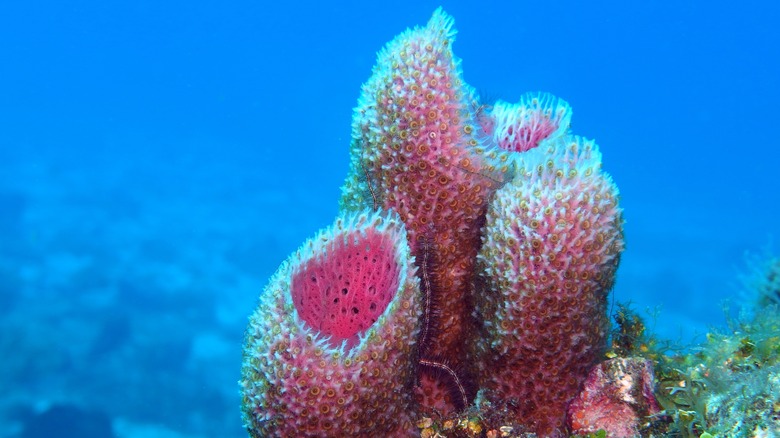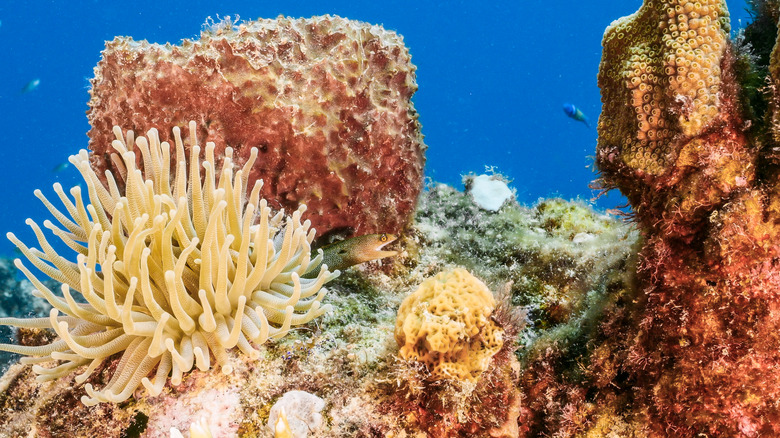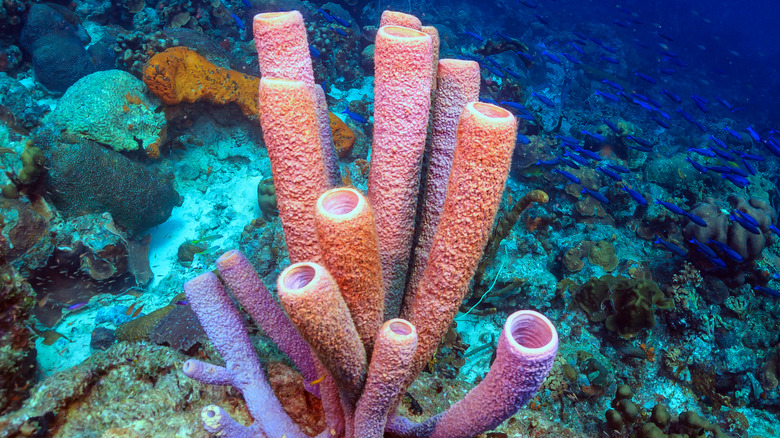The Truly Gross Way Sea Sponges Clean Themselves
We all have our own personal hygiene routines. Some of them are elaborate daily rituals, involving an array of carefully-selected and meticulously applied products. Others involve a quick squirt of shower gel and 10 minutes under the warm, soothing water. Some of us barely feel human if we don't shower daily, while others would consider doing so excessive.
According to Harvard Health Publishing, washing habits differ quite widely around the world. In China, around 50% of people reportedly shower or bathe two times each week, while 80% of people in Australia do so daily. Attitudes differ, and opinions on the effects of bathing more or less often do too. Per the outlet, though, daily showering can not only deprive the skin of healthy, important bacteria, but also leave it parched.
What should we do, then? Manage our personal hygiene in a manner we deem most appropriate for ourselves and not judge others for not doing exactly the same. What we should also do, however, is consider the case of the humble sea sponge. These incredible creatures have a truly unique, and utterly gross, approach to personal hygiene. Here's the snot-ridden way they clean themselves.
Sea sponges have a lot of mucus, it seems
Sponges are curious critters indeed. As Britannica reports, they predominantly live in the sea (only 2% of approximately 5,000 known species dwell in freshwater). They were believed to be plants until the 1750s and 1760s, the outlet goes on, lacking many of the characteristics that seem to define most creatures on the planet, such as internal organs. At the same time, though, they have the starfish-like ability to regenerate when damaged, on a scale that many fellow members of the animal kingdom are surely envious of.
You might think that the life of a sea sponge would be a largely carefree one. There are no taxes, grocery shopping or other adult responsibilities for your average sponge to concern itself with. One trouble that these life forms do share with us, however, is keeping clean. Certain sponge species clean themselves in a charming fashion Science News describes as "launch[ing] slow-motion snot rockets."
In February 2022, Nature Communications published the paper "Giant sponge grounds of Central Arctic seamounts are associated with extinct seep life." The study discusses the fact that filter feeding is the primary method sponges use for sustenance. Huge groups, or grounds, of them can reportedly "filter hundreds of liters of water." What happens, though, when something undesirable enters their systems? That's when it's snot rocket time.
The amazing sneezing sea sponge
According to Science News, water passes into the sponge's pores, or ostia. These can be very delicate indeed, and so the sponges have developed a way to not only filter sustenance in, but filter any waste from the water back out.
In the Caribbean lives Aplysina archeri, a species of tube sponge. According to the study "Sponges sneeze mucus to shed particulate waste from their seawater inlet pores" (via Current Biology), this species ... well, that title rather says it all. It was assumed that sponges filtered any waste back out through other pores, the oscula, but Aplysina archeri has a different method of cleaning itself. It "actively moves particle-trapping mucus against the direction of its internal water flow and ejects it into the surrounding water ... through periodic surface contractions that have been described earlier as 'sneezing.'" This unwanted waste is reportedly consumed by other lifeforms.
It's possible, the study goes on, that other sponges filter waste in a similar way, rather as corals are known to do. The fact that some sponges "sneeze" much as humans do is fascinating, but their role in their ecosystem is very important. It's lucky, then, that they have such a practical method of doing so.


